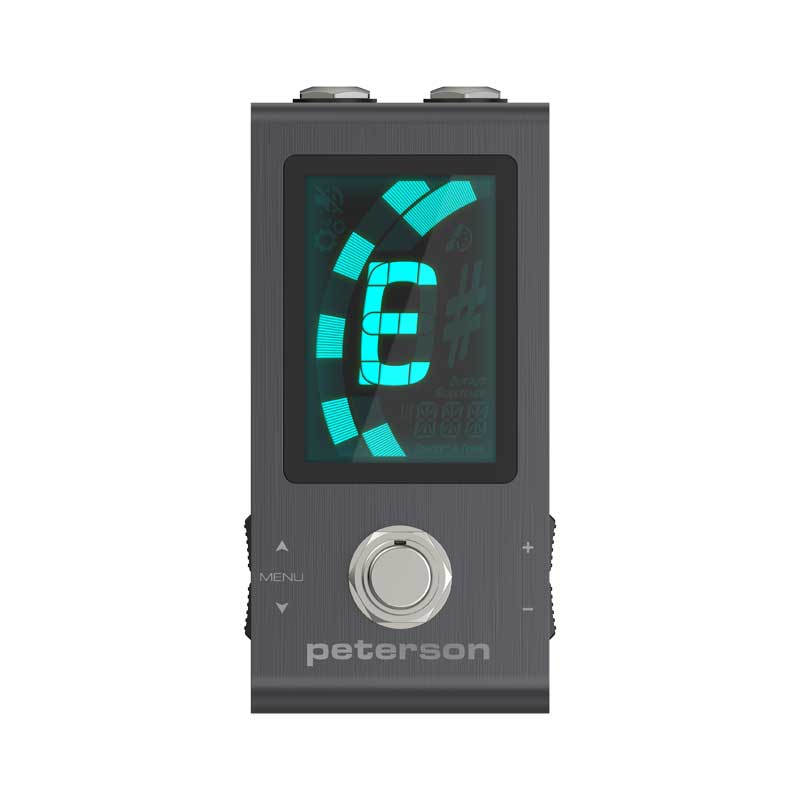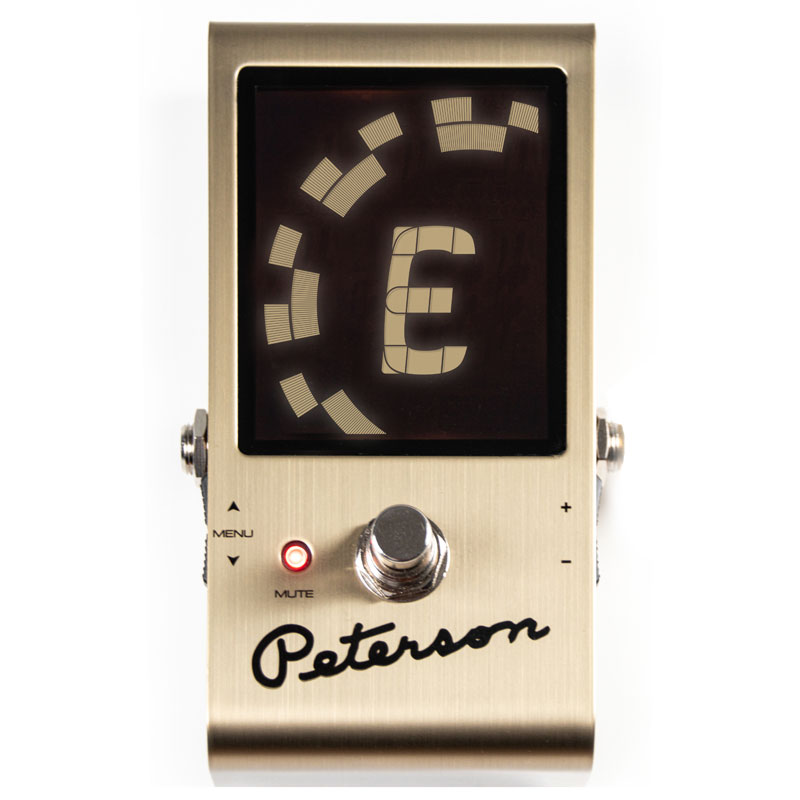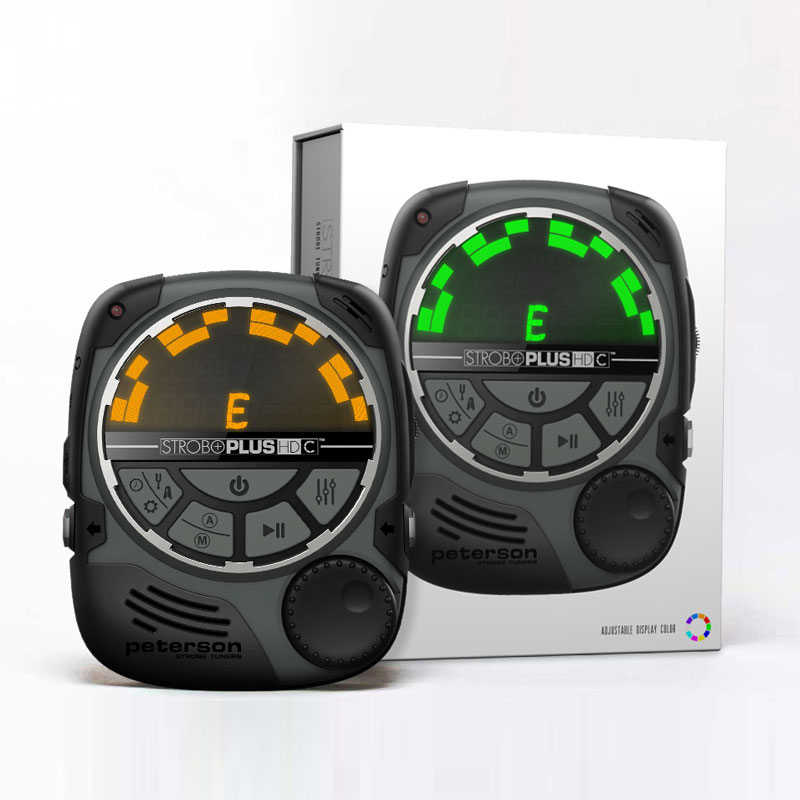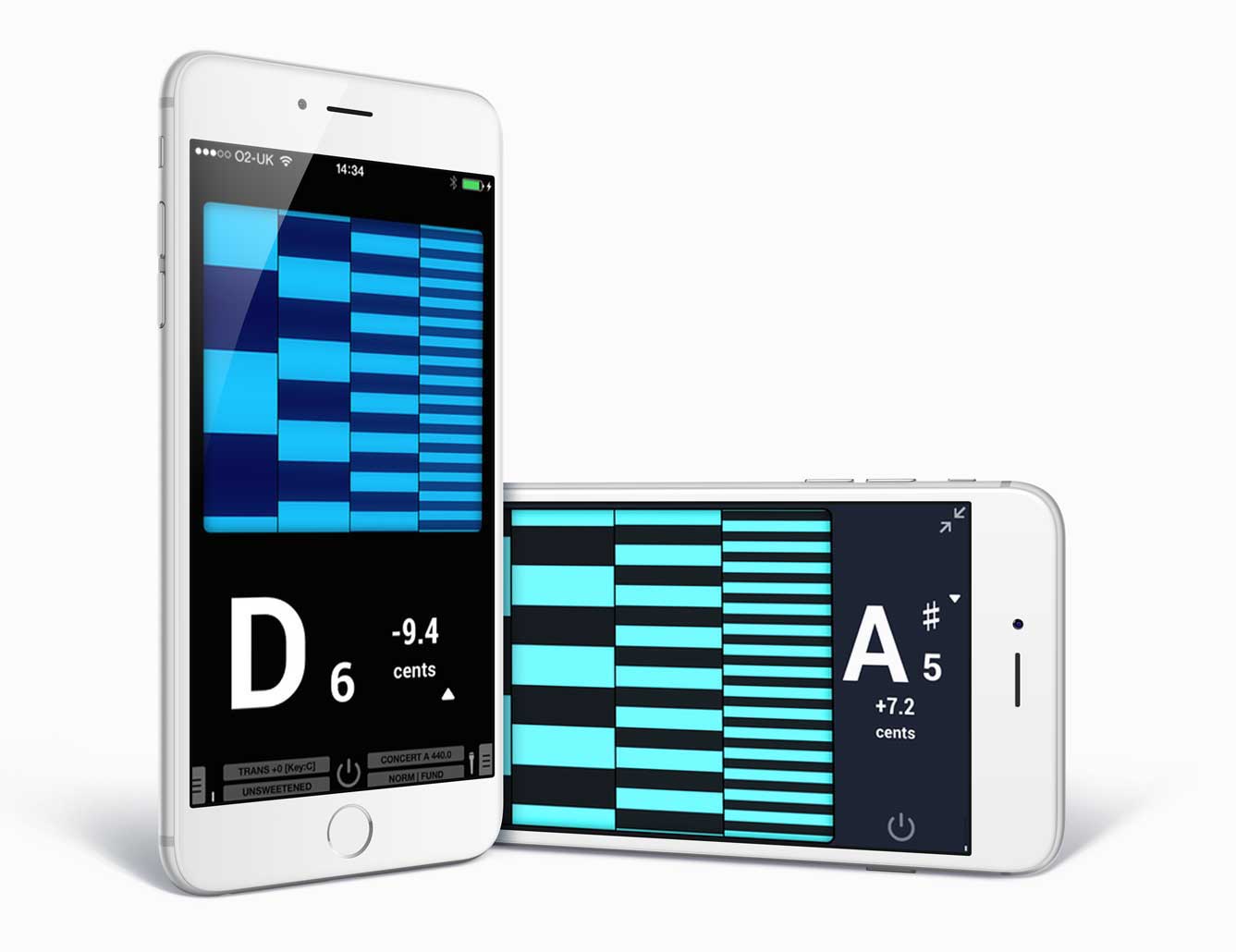Mandolin
Overview
Tuning Steps
Sweetened Tunings
Products
More Info
mandolin Videos
Discuss
Mandolin
Overview
Plucking an individual string tends to cause the second string in the pair to sound as well, which can result in an inconsistent display. To avoid this, a picking technique called the “rest stroke” is used. Using a pick or a plectrum, brush the first string of a pair and allow the pick to come to rest against a second string, therefore sounding the first string and silencing the other. Always remember to tune up to pitch and not down. This prevents the string from retaining tension in the nut to tuning peg and bridge to tailpiece areas.
Mandolin tuning is notoriously challenging, but with an accurate Peterson Strobe Tuner in your gig bag or instrument case, keeping your strings in check is a lot easier. Sam Bush, Ricky Skaggs and other mandolin greats are avid Peterson users, so you’ll be in good company!
How To Tune Your Mandolin
- Begin with the 1st string that is located closest to the floor when holding the mandolin in the normal playing position. Pluck upwards to sound the string and allow the pick to come to rest against the 2nd, thus muting it. Observe the tuner display and check that the note “E” is displayed. With your left hand, adjust the tuning peg to stop the strobe pattern image from moving continuously in any one direction. Continue to adjust until the strobe pattern is motionless.
- Pluck downwards to sound the 2nd string and allow the pick to come to rest against the 1st string. Check that the note “E” is displayed on your tuner. Adjust the tuning peg to stop the strobe pattern from moving.
- Repeat steps 1 and 2 for the A, D and G string pairs until all strings are tuned.
Standard And Alternate Tunings for mandolin family instruments
Mandolin
Octave Mandolin
Mandola
Mandocello
Mandobass
G3 G3 D4 D4 A4 A4 E5 E5
G2 G2 D3 D3 A3 A3 E4 E4
C3 C3 G3 G3 D4 D4 A4 A4
C2 C2 G2 G2 D3 D3 A3 A3
E1 A1 D2 G2
G3 G3 D4 D4 A4 A4 D5 D5
G2 G2 D3 D3 A3 A3 D4 D4
D3 D3 A3 A3 E4 E4 A4 A4
G2 G2 D3 D3 A3 A3 D4 D4
C1 G1 D2 A2
A2 A2 D3 D3 A3 A3 D4 D4
D3 D3 A3 A3 E4 E4 B4 B4
G2 G2 D3 D3 G3 G3 D4 D4
A2 A2 E3 E3 A3 A3 E4 E4
G2 G2 D3 D3 A3 A3 D4 D4
D2 D2 G3 G3 D3 D3 G4 G4
Mandolin
G3 G3 D4 D4 A4 A4 E5 E5
G3 G3 D4 D4 A4 A4 D5 D5
Octave Mandolin
G2 G2 D3 D3 A3 A3 E4 E4
G2 G2 D3 D3 A3 A3 D4 D4
A2 A2 D3 D3 A3 A3 D4 D4
A2 A2 E3 E3 A3 A3 E4 E4
Mandola
C3 C3 G3 G3 D4 D4 A4 A4
D3 D3 A3 A3 E4 E4 A4 A4
D3 D3 A3 A3 E4 E4 B4 B4
G2 G2 D3 D3 A3 A3 D4 D4
Mandocello
C2 C2 G2 G2 D3 D3 A3 A3
G2 G2 D3 D3 A3 A3 D4 D4
G2 G2 D3 D3 G3 G3 D4 D4
D2 D2 G3 G3 D3 D3 G4 G4
Mandobass
E1 A1 D2 G2
C1 G1 D2 A2
Sweetened Tunings
Sweeteners For Mandolin
Products With Mandolin Sweeteners

StroboStomp Mini
$119.00

StroboStomp LE
$169.00

StroboPLUS HDC
$179.99

StroboStomp HD
$149.00

StroboClip HD
$59.99

StroboPLUS HD
$149.99

iStroboSoft™ (iOS)
$9.99

Things to check to get the most out of your instrument’s tuning
Checking Intonation
Using your Peterson Strobe Tuner, check this as follows:
Having tuned the G string pair correctly, pluck one of them while fretting it at the 12th fret. If the fretted tone shows sharp on your tuner, the bridge needs to be moved a slight distance further away from the end of the neck. If the fretted tone shows flat on your tuner, then the bridge needs to be moved a slight distance closer to the end of the neck.
Repeat this procedure with one of the E strings at the other side of the bridge. When both open and fretted tones are in tune in each case, the bridge is in the correct position.
Famous Mandolins


View Another Instrument




